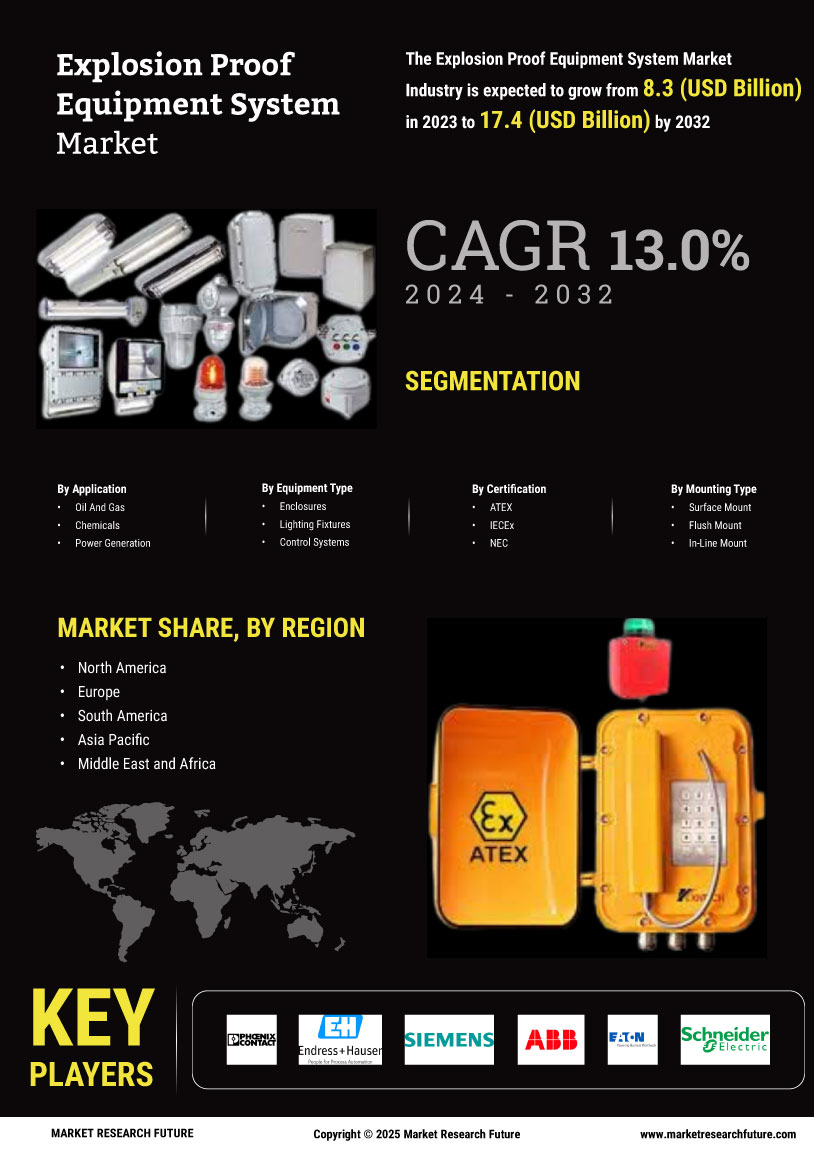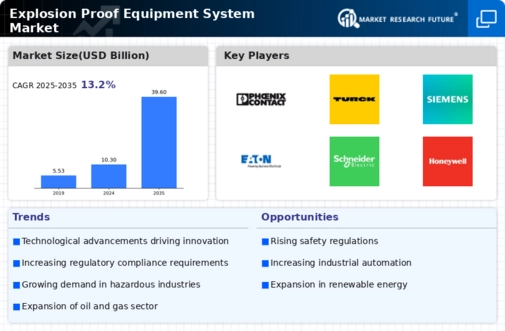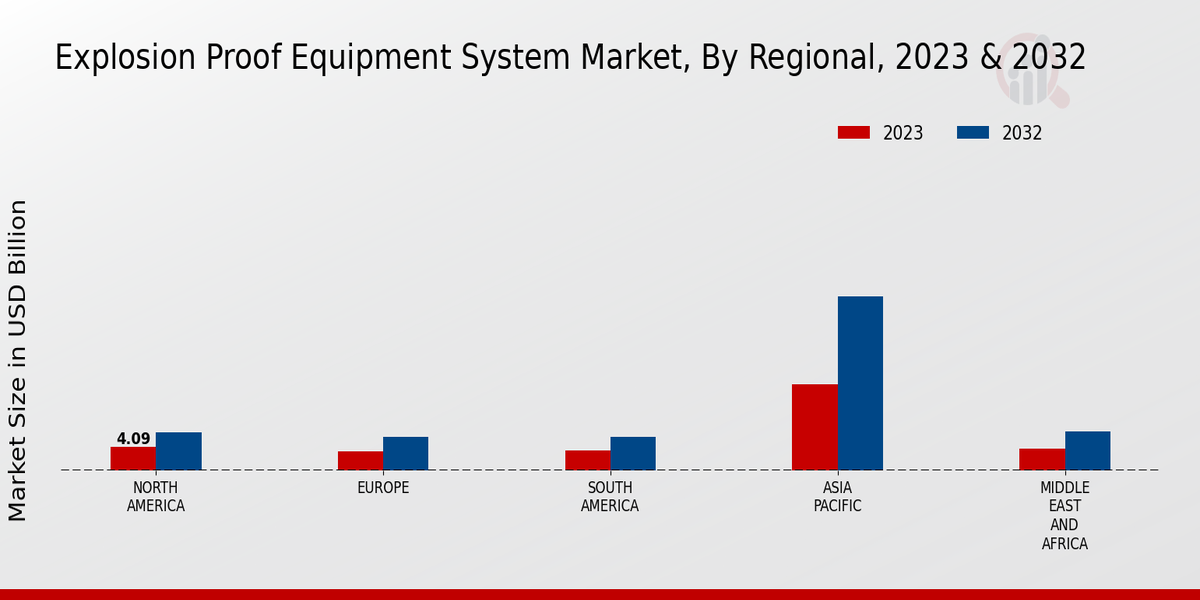Market Growth Projections
The Global Explosion Proof Equipment System Market Industry is poised for substantial growth, with projections indicating a market size of 10.3 USD Billion in 2024 and a remarkable increase to 39.6 USD Billion by 2035. This growth trajectory suggests a compound annual growth rate (CAGR) of 13.04% from 2025 to 2035. The expansion is driven by various factors, including regulatory compliance, technological advancements, and increased industrial activities in emerging economies. The market's potential is further underscored by the rising demand for safety solutions across multiple sectors, highlighting the critical role of explosion-proof equipment in ensuring operational safety.
Growing Industrial Safety Regulations
The Global Explosion Proof Equipment System Market Industry is experiencing a surge in demand driven by stringent industrial safety regulations. Governments worldwide are enforcing regulations to ensure worker safety in hazardous environments, particularly in sectors such as oil and gas, chemicals, and mining. For instance, the implementation of the ATEX directive in Europe and the NEC standards in the United States mandates the use of explosion-proof equipment in specific applications. This regulatory landscape is likely to propel the market, as companies invest in compliant equipment to avoid penalties and enhance workplace safety. As a result, the market is projected to reach 10.3 USD Billion in 2024.
Rising Demand from Emerging Economies
Emerging economies are becoming pivotal players in the Global Explosion Proof Equipment System Market Industry. Countries in Asia-Pacific and Latin America are witnessing rapid industrialization, leading to increased investments in sectors such as oil and gas, chemicals, and manufacturing. For instance, nations like India and Brazil are expanding their industrial bases, necessitating the adoption of explosion-proof equipment to ensure safety in hazardous environments. This trend is expected to contribute significantly to market growth, with projections indicating that the market could reach 39.6 USD Billion by 2035, reflecting the increasing focus on safety in developing regions.
Technological Advancements in Equipment Design
Innovations in technology are significantly influencing the Global Explosion Proof Equipment System Market Industry. Manufacturers are increasingly adopting advanced materials and designs that enhance the performance and reliability of explosion-proof equipment. For example, the integration of IoT technology allows for real-time monitoring and predictive maintenance, reducing the risk of equipment failure. These advancements not only improve safety but also optimize operational efficiency, making them attractive to industries that prioritize safety and productivity. As a consequence, the market is expected to grow at a CAGR of 13.04% from 2025 to 2035, indicating a robust future driven by technological progress.
Expansion of Oil and Gas Exploration Activities
The expansion of oil and gas exploration activities is a significant driver for the Global Explosion Proof Equipment System Market Industry. As energy demands continue to rise, companies are exploring new reserves in challenging environments, which necessitates the use of explosion-proof equipment to mitigate risks. For instance, offshore drilling operations require specialized equipment that can withstand harsh conditions while ensuring safety. This growing exploration activity is expected to bolster market growth, as investments in safety equipment become paramount. The increasing focus on safe extraction methods is likely to sustain demand for explosion-proof solutions in the energy sector.
Increased Focus on Environmental Sustainability
The Global Explosion Proof Equipment System Market Industry is also being driven by a heightened focus on environmental sustainability. Industries are increasingly recognizing the importance of minimizing environmental impact while ensuring safety in hazardous areas. This shift is prompting companies to invest in explosion-proof equipment that not only meets safety standards but also adheres to environmental regulations. For example, equipment designed to reduce emissions and improve energy efficiency is gaining traction. This trend aligns with global sustainability goals and is likely to enhance the market's growth trajectory, as businesses seek to balance safety and environmental responsibility.



















Leave a Comment